Tonal Display
Tonal display options concern all musical objects with possible tonal harmonic or melodic progressions : chord-seqs, multi-seqs, voices and polys .
Tonality
The Editor preferences tab provides a number of options and tools, which relate to tonality expression and analysis. | 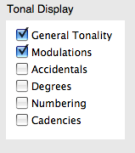 |
To choose a tonality
-
select the editor and press t.
-
A tonality dialogue window pops up.
-
Select the or mode in the pop up menu, and a key signature via the < and > buttons.
-
The tonality is indicated on the upper left corner of the editor, as well as a conventional key signature.
To restore the original "atonal" configuration, press SHIFT + t .

OM automatically assigns the expected accidentals, depending on the chosen tonality. Accidentals can though be modified enharmonically. To modify an accidental :
| 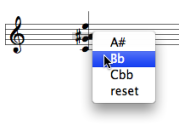 |
Editor Scale
The default accidental notation system in score editors uses sharps. This system can be modified, to a certain extent.
 | The Editor Scale dialogue window offers a limited number of enharmonic accidentals, based on the standard twelve semitones notation. This especially makes sense when using a tonal or modal semitones scale pattern. To specify a scale
|
To assign an enharmonic accidental to a note, Ctrl / right click on it and select a menu item.
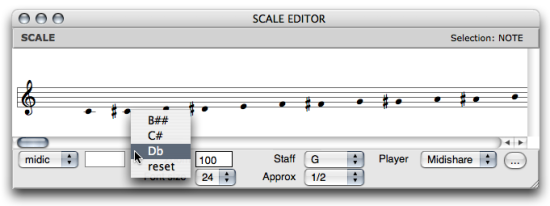
Modifications of the default scale are displayed by the dialogue window. Click on Default to reset the default scale. | 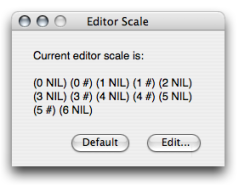 |
Cadences, Degrees and Figuring
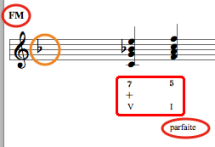 | An elementary tonal analysis tool is implemented in musical editors. It is based on the options provided in the Editor preferences :
The analysis takes place as chords are being edited, provided OM can recognize a listed chord and chord progression. |
Modulation
Modulations can be specified textually in the score editor.
| 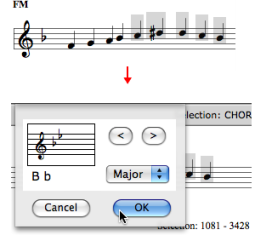 |
 | OM displays the modulation but it doesn't automatically adapt the key signature or accidentals to the new tonality. |
